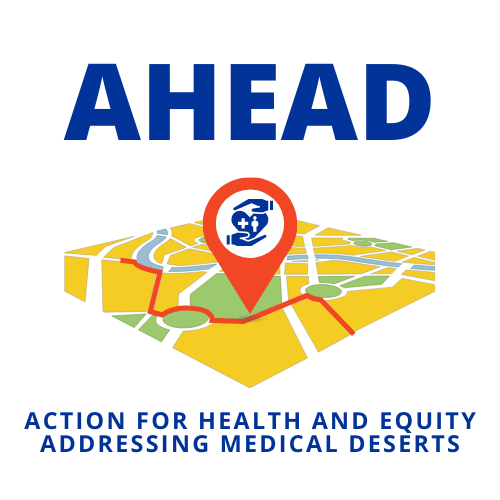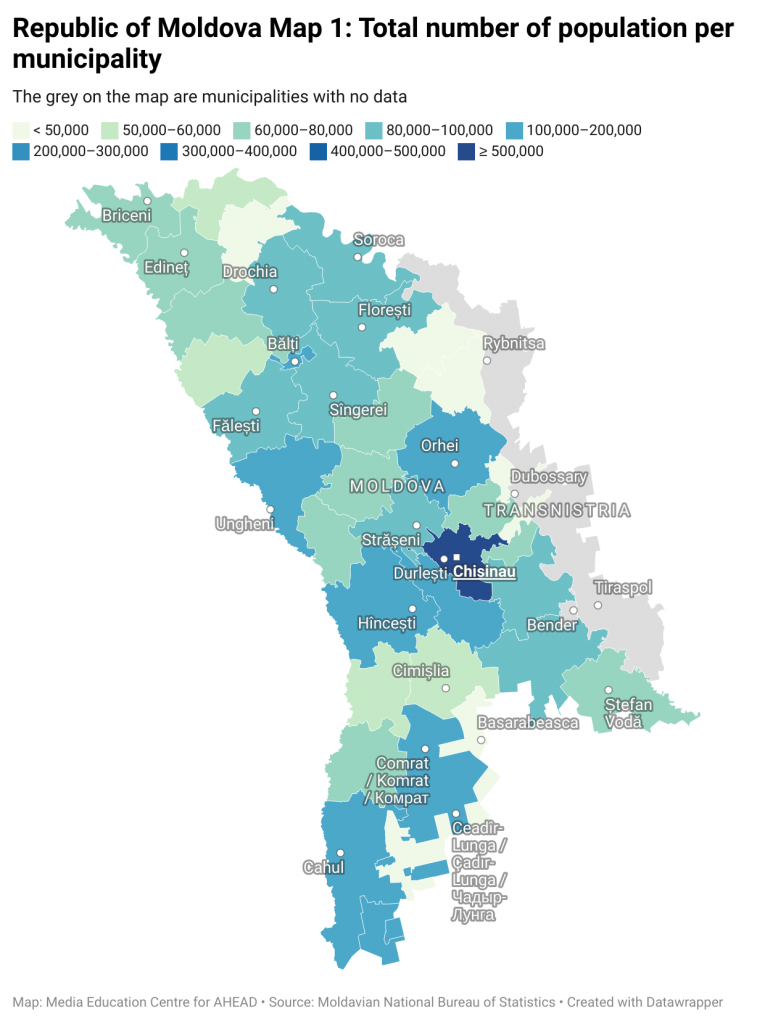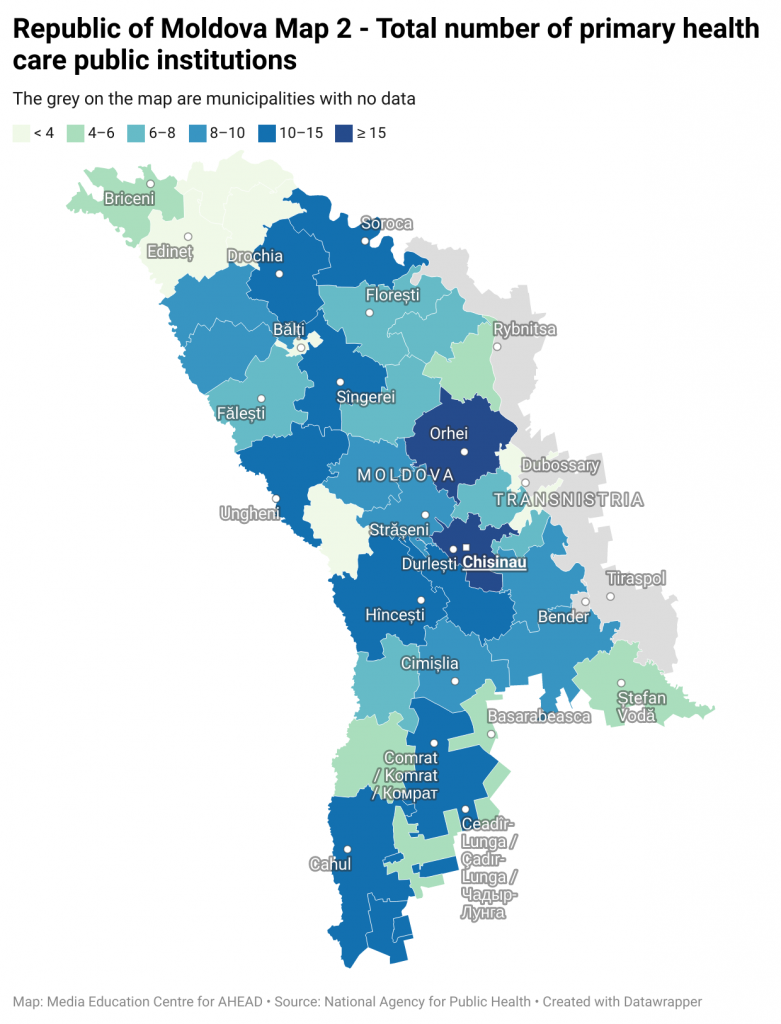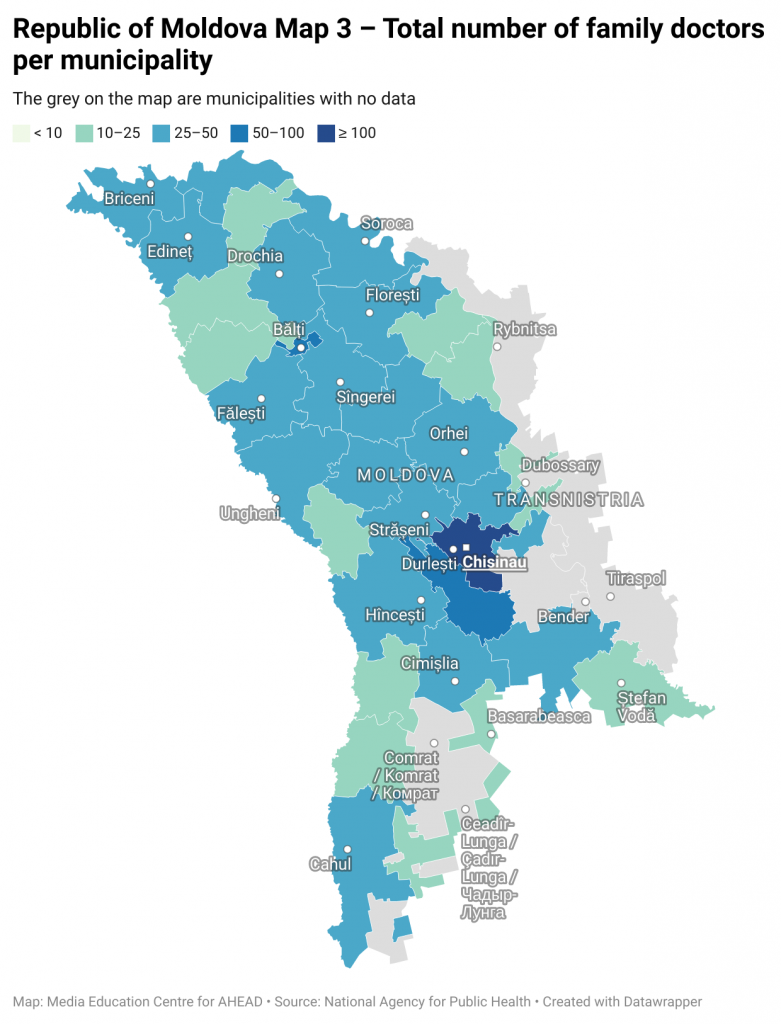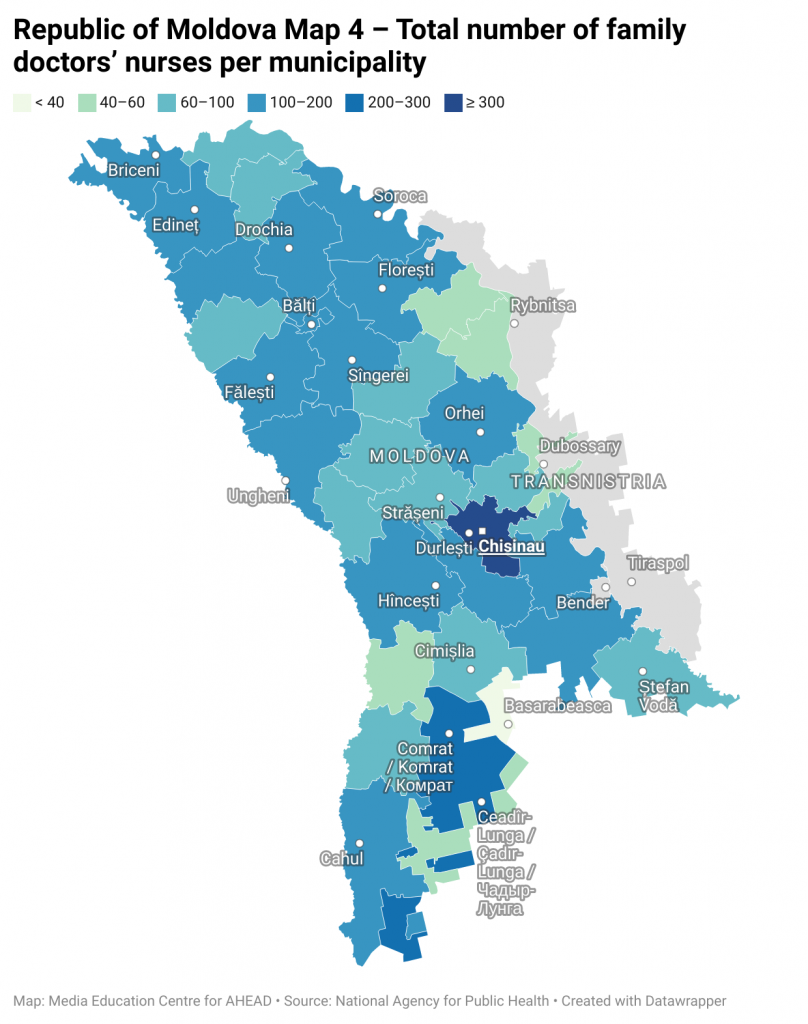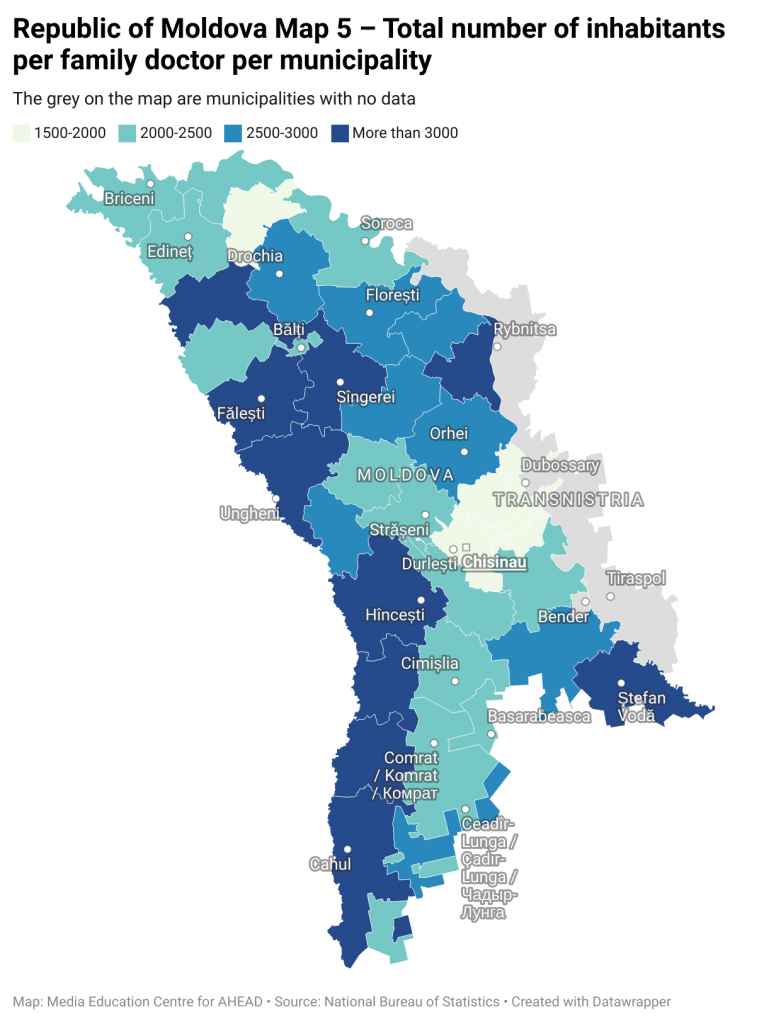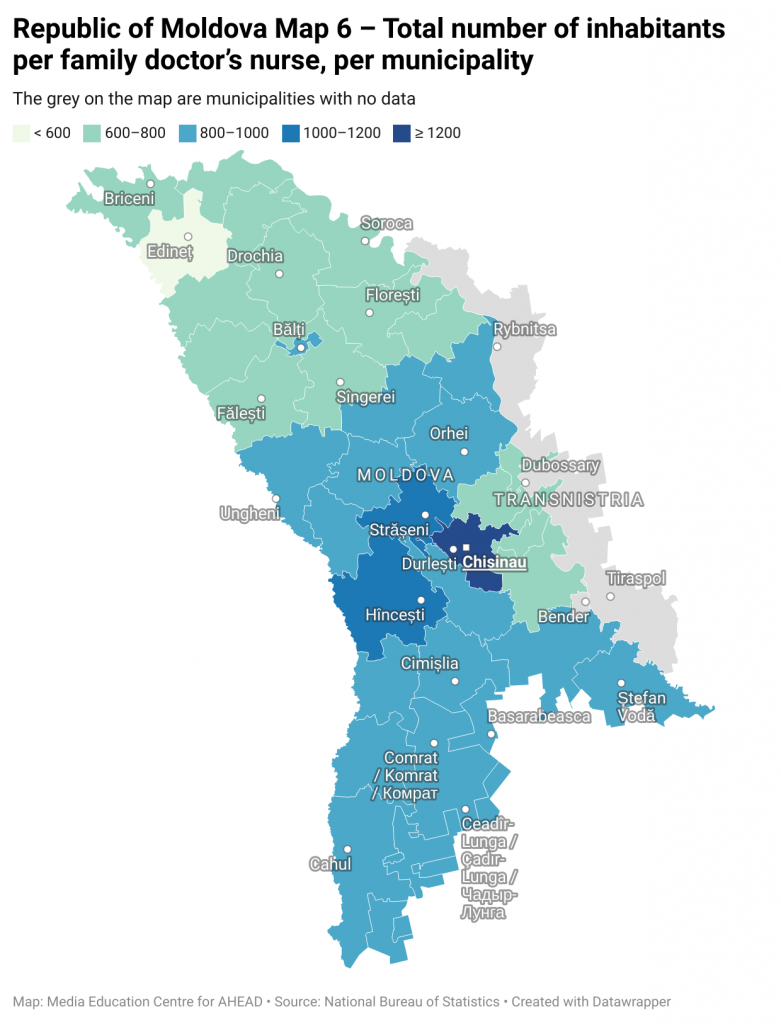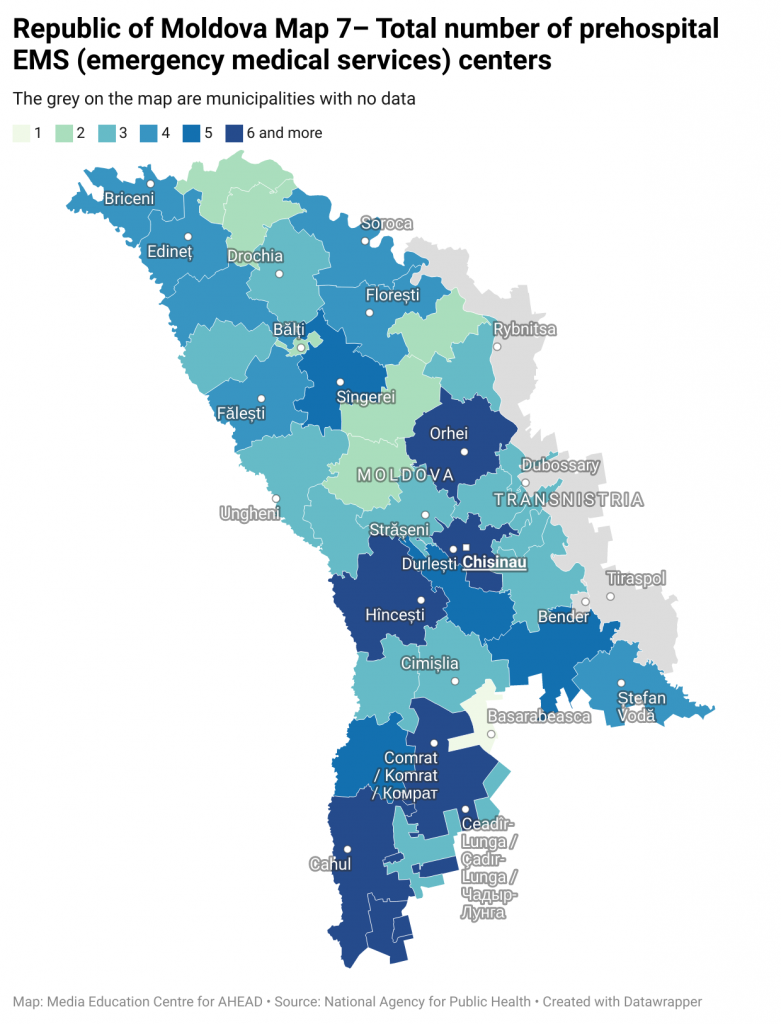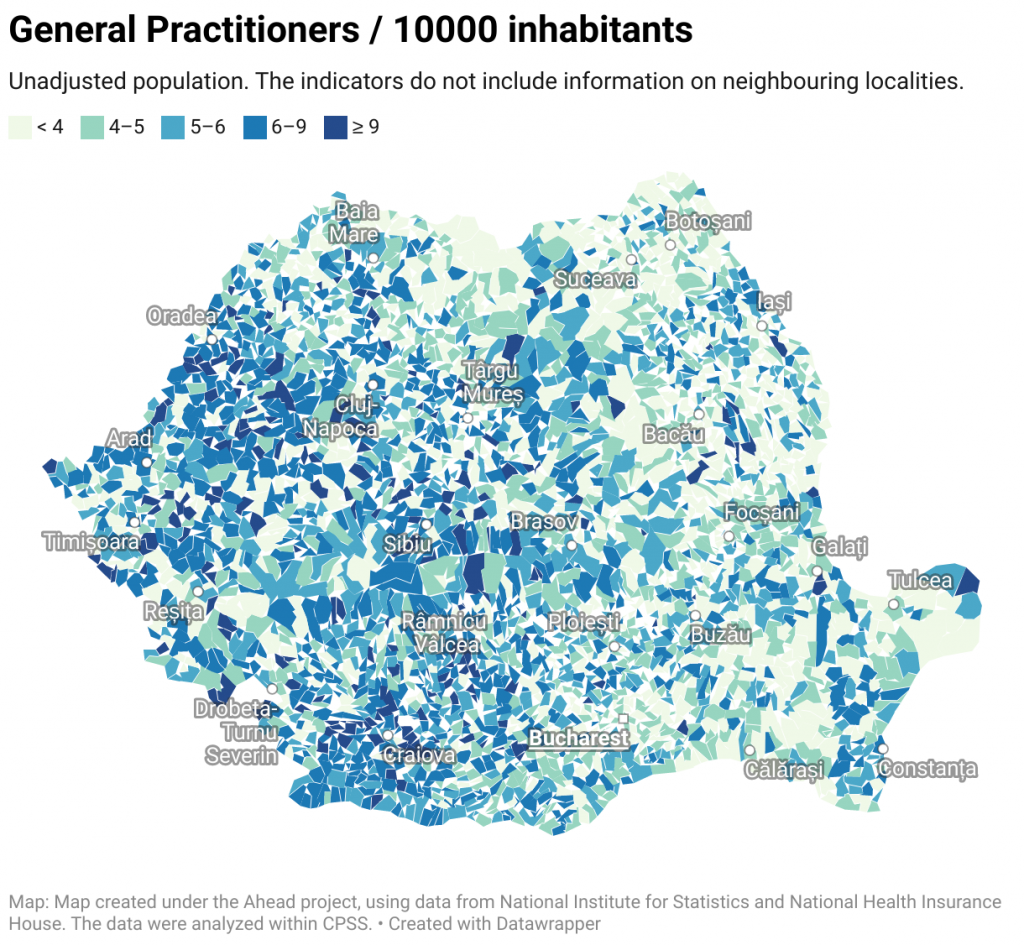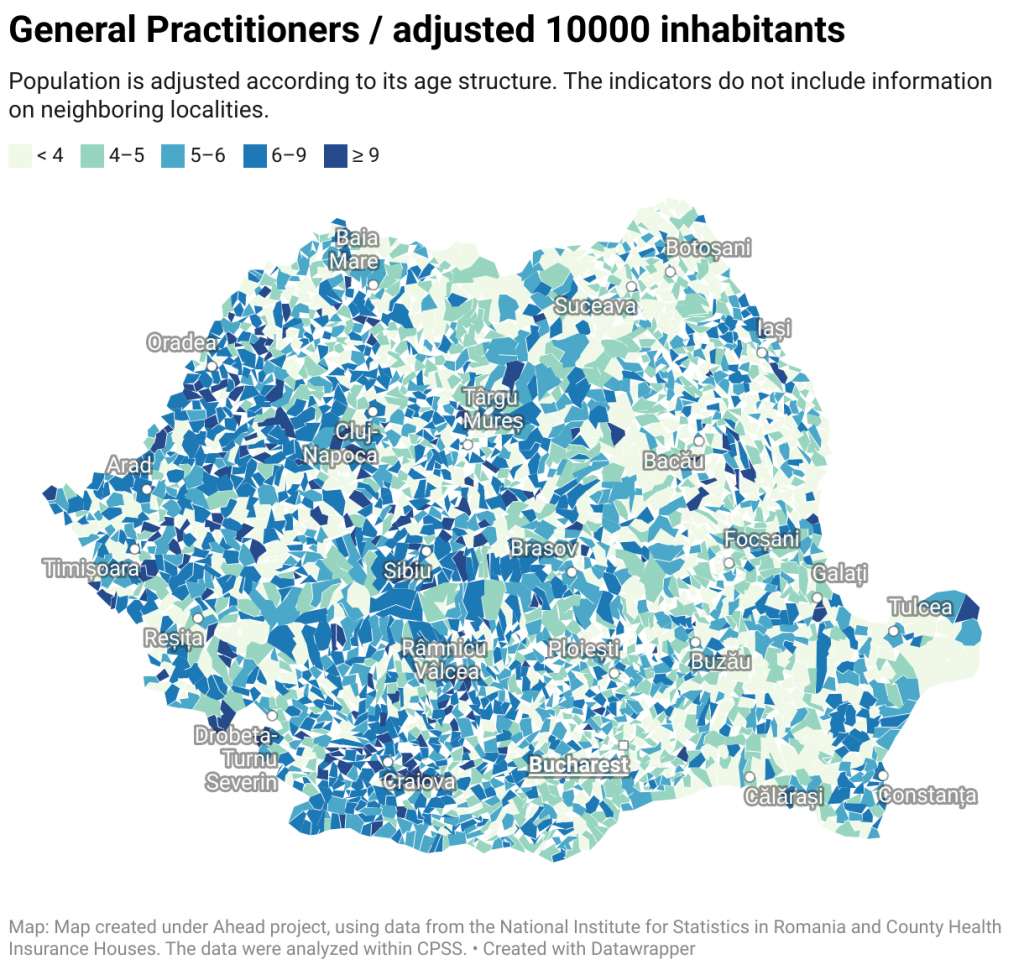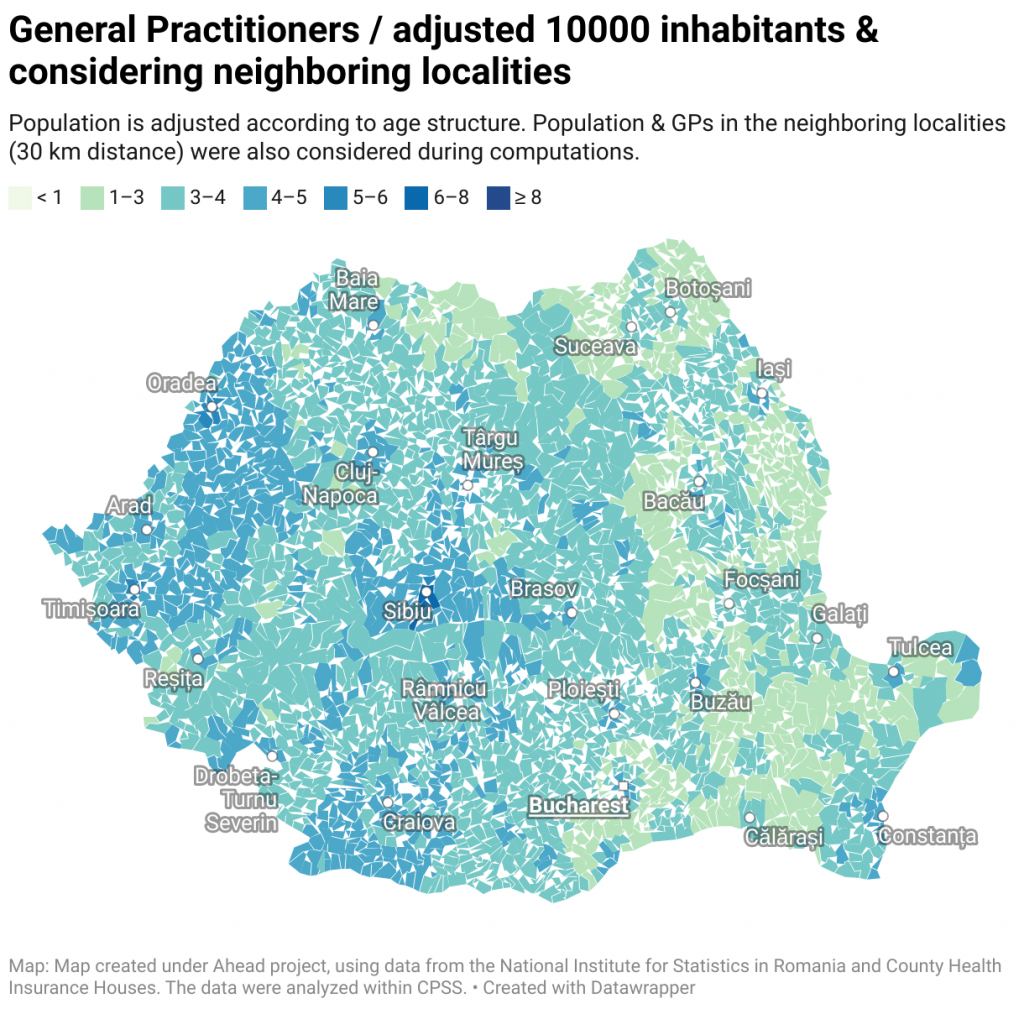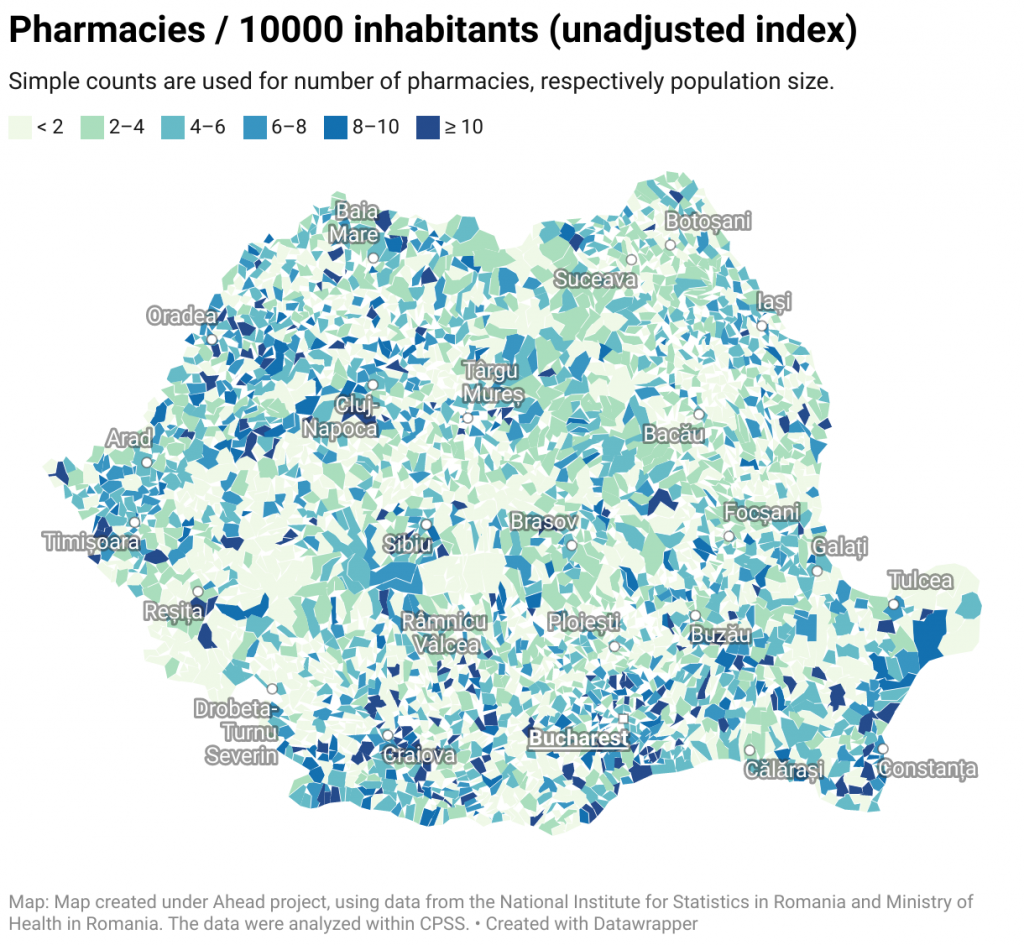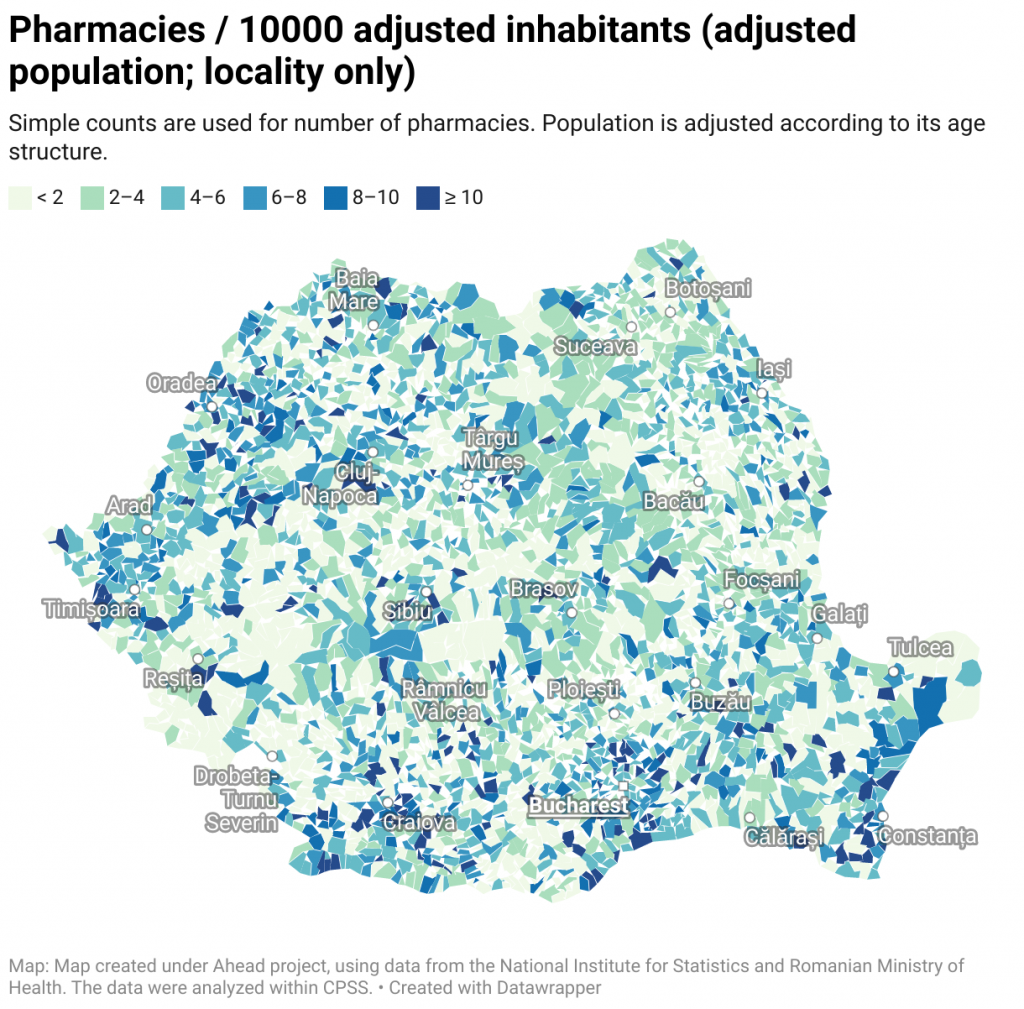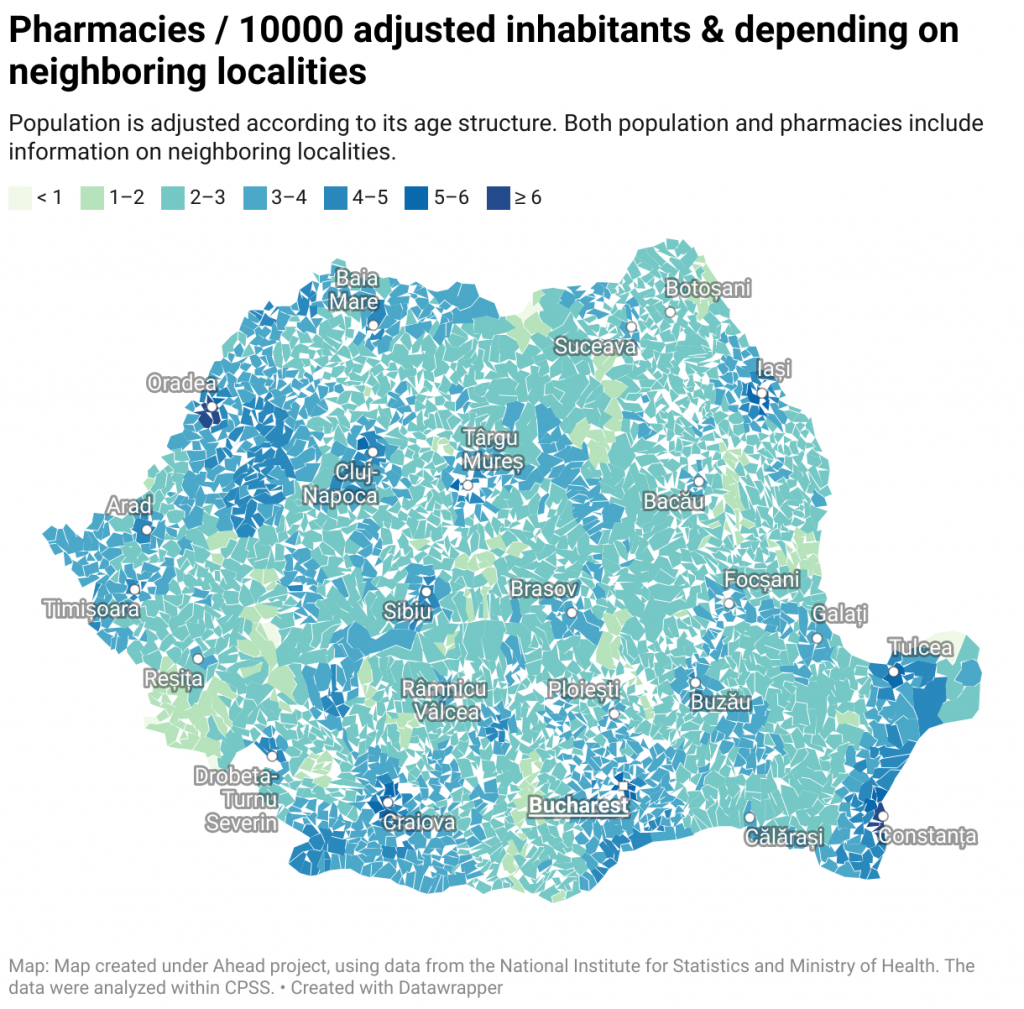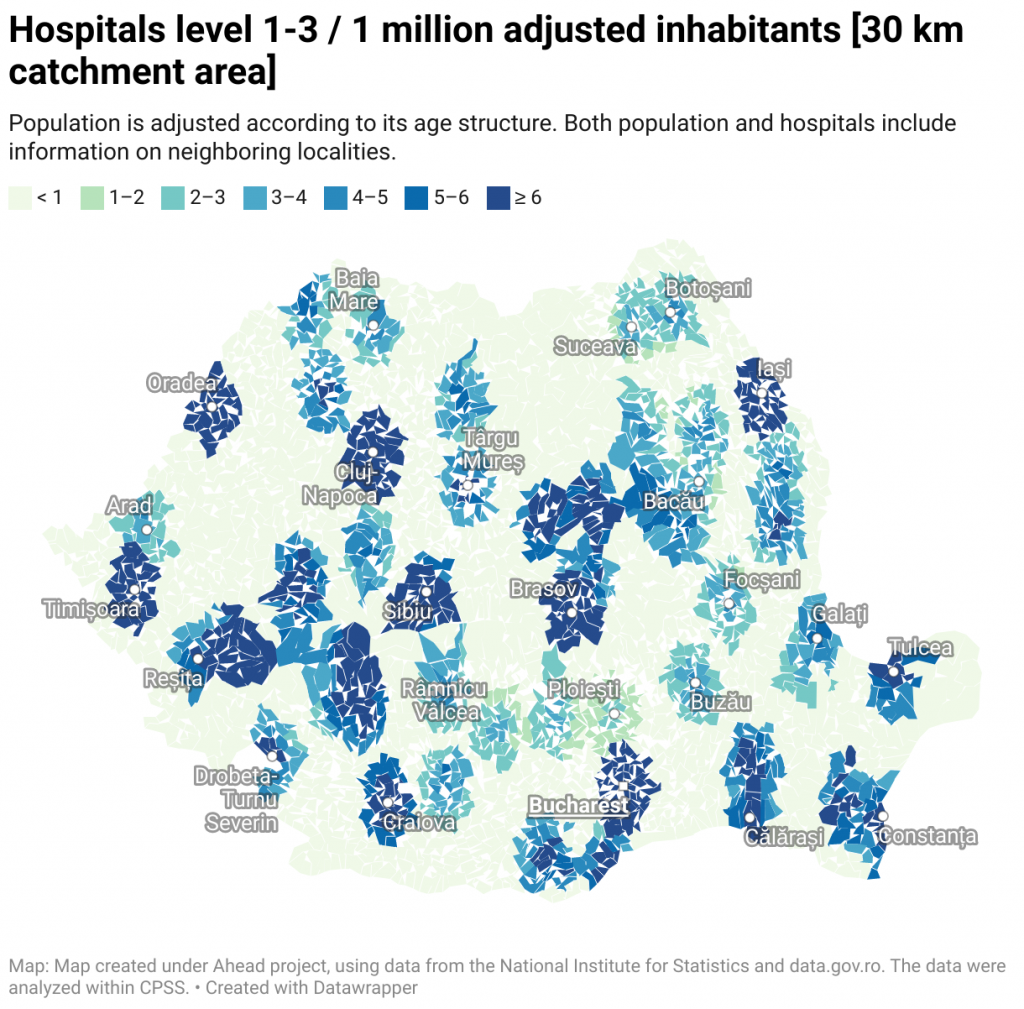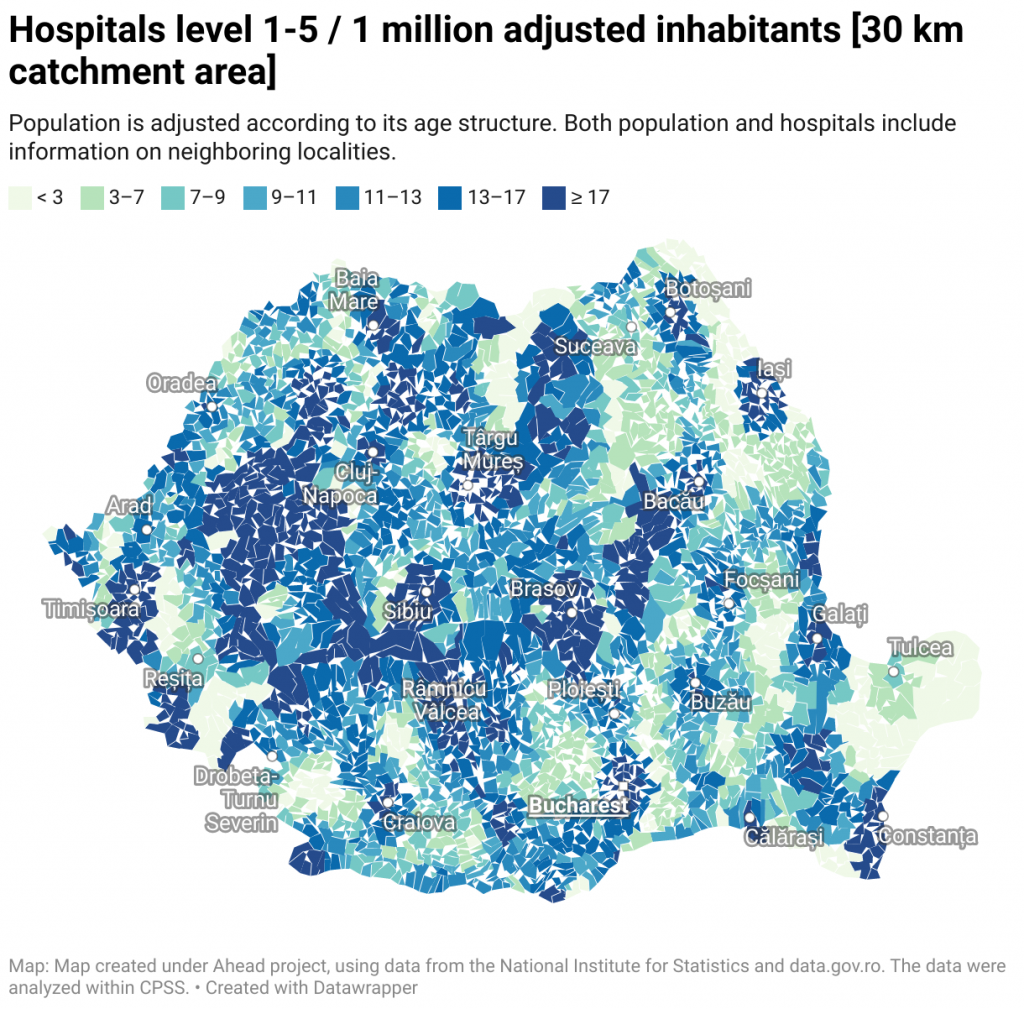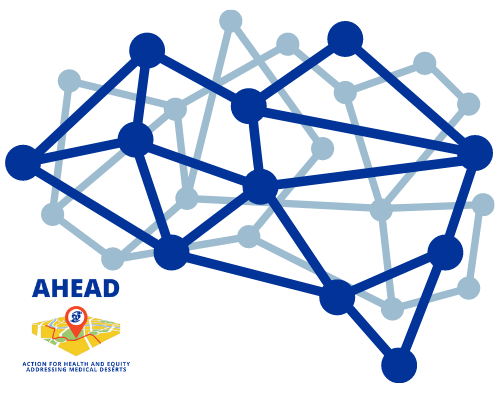Republic of Moldova
On this page, you can the following information about medical desertification in Moldova:
1) An illustrative story about an individual affected by medical desertification in Moldova
2) Our country report on medical deserts in Moldova
3) A selection of indicators for background information about Moldova
4) Our Medical Deserts Diagnostic Tool: maps based on the contextualised set of indicators
Map 1: Total population by municipality
This is a map of the Republic of Moldova showing the total population, per municipality, as a possible indicator of healthcare access, color-coded from light green (the lowest number) to dark blue (highest number).
For more information click on the MAP!
Map 2: Total number of primary health care public institutions
This is a map of the Republic of Moldova showing the total number of primary health care public institutions, per municipality, as a possible indicator of healthcare access, color-coded from light green (the lowest number) to dark blue (highest number).
For more information click on the MAP!
Map 3: Total number of family doctors per municipality
This is a map of the Republic of Moldova showing the total number of family doctors, per municipality, as a possible indicator of healthcare access, color-coded from light blue (the lowest number) to dark blue (highest number).
For more information click on the MAP!
Map 4: Total number of family doctors’ nurses per municipality
This is a map of the Republic of Moldova showing the total number of family doctors’ nurses, per municipality, as a possible indicator of healthcare access, color-coded from light blue (the lowest number) to dark blue (highest number).
For more information click on the MAP!
Map 5: Total number of inhabitants per family doctor per municipality
This is a map of the Republic of Moldova showing the number of inhabitants per family doctor, in each municipality, as a possible indicator of healthcare access, color-coded from light blue (the lowest number) to dark blue (highest number).
For more information click on the MAP!
Map 6: Total number of inhabitants per family doctor’s nurse, per municipality
This is a map of the Republic of Moldova showing the total number of inhabitants per family doctor’s nurse, per municipality, as a possible indicator of healthcare access, color-coded from light blue (the lowest number) to dark blue (highest number).
For more information click on the MAP!
Map 7: Total number of prehospital EMS (emergency medical services) centers
This is a map of the Republic of Moldova showing the total number of prehospital EMS (emergency medical services) centers, per municipality, as a possible indicator of healthcare access, color-coded from light blue (the lowest number) to dark blue (highest number).
For more information click on the MAP!
